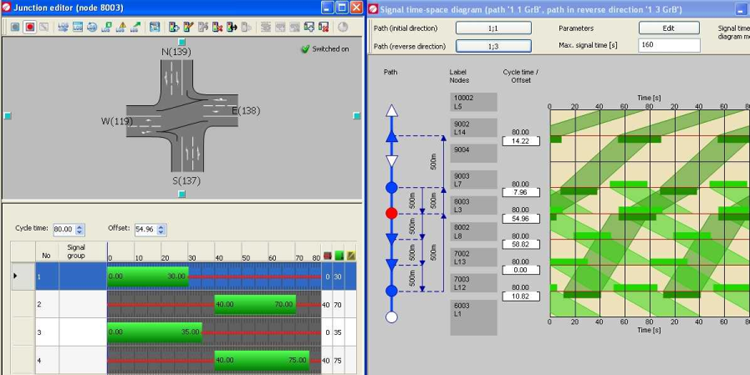You can synchronize the signal time-space diagram with other windows, for example with the Network editor window, the Junction editor, or the nodes or main nodes list. If the windows are synchronized and you mark one or several nodes or main nodes in one window, they are automatically marked in the other windows as well. Depending on the setting, the display in the Network editor window is automatically shifted or enlarged.
Example: You simultaneously open the signal time-space diagram and the junction editor, with the signal timing view (Editing the signal times of a node).. If you select a node in the signal time-space diagram, this node is automatically displayed in the junction editor.

|
Note: For synchronization to work, you need to enable it in the other respective windows as well (The list window and Junction editor and signal control). |
1. Make sure the Signal time-space diagram window is open (Opening a signal time-space diagram).
2. From the Signal time-space diagram menu, choose Synchronization with other windows.
3. Select the desired entry.
|
Element |
Description |
|
No synchronization |
The signal time-space diagram is not synchronized with other windows. |
|
Highlight object(s) |
Nodes or main nodes that are marked in the signal time-space diagram are also marked in other windows (or vice versa). |
The settings are applied.
4. In the signal time-space diagram, click under Path the node or main node you need.
|
Note: The nodes that all paths traverse are by default displayed as circles. All other nodes are displayed as triangles. |
In all other open windows the nodes or main nodes are also marked.

